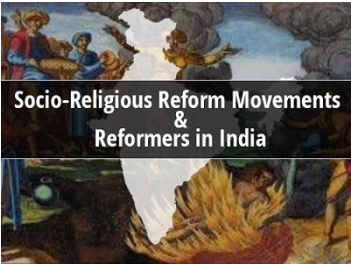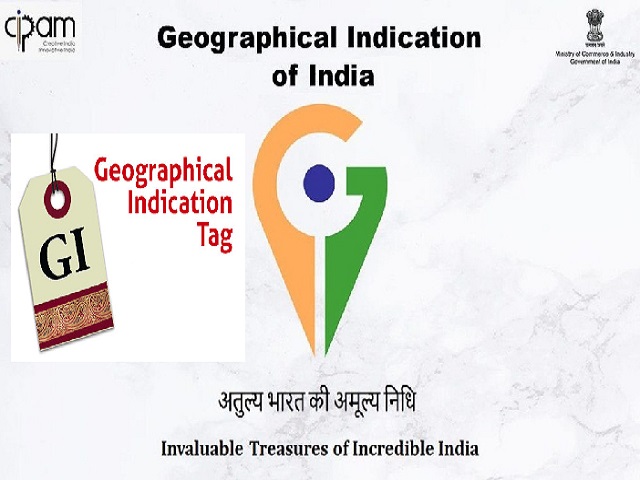- Brahmo Samaj and Raja Ram Mohan Roy
Raja Rammohan Roy, the father of the Indian Renaissance, founded the Brahmo Sabha (later known as Brahmo Samaj) in 1828.
Brahmo Samaj aimed to purify Hinduism by removing ill practices, abuses, and superstitions and preaching monotheism or belief in one God.
In 1814, he set up Atmiya Sabha in Calcutta to campaign against idolatry, caste rigidities, meaningless rituals, and other social ills.
He wrote Gift to Monotheists (1809) and In Precepts of Jesus (1820).
Raja Ram Mohan Roy’s efforts led Lord William Bentinck to declare the practice of Sati a crime in 1829.
Note: Mughal Emperor Akbar II gave the title of ‘Raja’ to Ram Mohan Roy.
Successive Branches of Brahmo Samaj
Keshub Chandra Sen and his followers founded the Brahmo Samaj of India in 1866, while Debendranath Tagore’s Samaj came to be known as the Adi Brahmo Samaj.
After 1878, the unhappy followers of Keshub Chandra Sen set up a new organization, the Sadharan Brahma Samaj.
- Young Bengal Movement and Henry Vivian Derozio
A young Anglo-Indian, Henry Vivian Derozio, who taught at the Hindu College (founded in 1817) was the leader and inspirer of this progressive trend.
Drawing inspiration from the Great French Revolution, Derozio inspired his pupils to think freely and rationally, question all authority, love liberty, equality, and freedom, and oppose decadent customs and traditions.
His students carried forward his ideas and came to be known as Derozians.
Note: Henry Derozio was perhaps the first nationalist poet of modern India.
- Arya Samaj and Swami Dayanand
Arya Samaj was founded by Swami Dayanand Saraswati ( or Mulshankar) in 1875 at Bombay (later the headquarters of the Samaj were established at Lahore).
Dayanand’s views were published in his famous work, Satyarth Prakash (The True Exposition).
He gave the slogan “Back to the Vedas“.
The nucleus for this movement was provided by the Dayanand AngloVedic (D.A.V.) schools established first at Lahore in 1886.
To protect the Hindu society from the onslaught of Christianity and Islam, the Samaj started the shuddhi (purification) movement to reconvert to the Hindu fold.
Note: Swami Shraddhanand started the Gurukul at Hardwar in 1902 to impart education in the traditional framework.
- Prarthana Samaj and Atmaram Pandurang
It was formed by Dr. Atmaram Pandurang with the help of Keshub Chandra Sen in 1867.
Prarthana Samaj suggested the worship of one Almighty. It also advocated social reforms like opposed to the caste system, women’s education, widow remarriage, etc.
One of the main leaders of this Samaj was Justice Mahadeo Govind Ranade.
- Theosophical Society and Madame H.P.Blavatsky
The Theosophical Society was founded in the United States in 1875 by Madame H.P.Blavatsky and Colonel M.S. Olcott, who were inspired by Indian thought and culture.
Later in 1882, they shifted the headquarters of the Society to Adayar, on the outskirts of Madras in India.
In India, the movement gained popularity when Annie Besant (1847-1933) assumed its leadership in 1907.
- Satyashodhak Samaj and Jyotiba Phule
Jyotiba Phule founded the Satyashodhak Samaj (Truth Seekers’ Society) in 1873.
The main aims of the movement were (i) social service, and (ii) spread of education among women and lower caste people.
Phule’s works, Sarvajanik Satyadharma and Gulamgiri, became sources of inspiration for the common masses.
- The Servants of India Society and Gopal Krishna Gokhale
G.K. Gokhale founded the Servants of India Society in 1905.
The aim of the society was to train national missionaries for the service of India, to promote, by all constitutional means, the, true interests of the Indian people, and to prepare a cadre of selfless workers who were to devote their lives to the cause of the country in a religious spirit.
Note: After Gokhale’s death (1915), Srinivasa Shastri took over as president.
- Ramakrishna Movement and Swami Vivekananda
Swami Vivekananda (Narendranath Datta) founded the Ramakrishna Mission in 1897. The headquarters of the Mission are at Belur near Calcutta.
The teachings and ideas of Ramakrishna Paramahamsa (1836-86) was the main inspiration behind this socio-religious movement.
Note: At the Parliament of Religions held at Chicago in 1893, Swami Vivekananda made a great impression on people by his learned interpretations.
- The Aligarh Movement and Sir Syed Ahmed Khan
The main objective of the Aligarh Movement was to persuade the Muslim community to acquire western-style scientific education and the English language for the Muslim population of British India.
Note: Aligarh Muslim University was founded by Syed Ahmed in 1875.
- Self Respect Movement and E.V.Ramasamy Periyar
The self-respect movement was started by E.V. Ramasamy Naicker, in 1925. His devotee used to call him ‘Periyar’, which means “The Great Man“.
The movement was intended solely by rejecting Brahmanical religion and culture, which Naicker saw as the primary tool for exploiting the lower castes.
He sought to undermine the position of brahmin priests by formalizing weddings without brahmin priests.
Note: E.V. Ramasamy is regarded as the ‘Father of Modern Tamil Nadu‘.
- Deoband Movement and Mohammad Qasim Nanotavi
The Deoband Movement was established in Deoband in the Saharanpur district (United Provinces) in 1866 by Mohammad Qasim Nanotavi and Rashid Ahmed Gangohi.
The Movement was organized by the orthodox section among the Muslim ulema as a revivalist movement, with the twin objectives of propagating pure teachings of the Quran and Hadis among Muslims and keeping alive the spirit of jihad against the foreign rulers.
Sikh Reform Movements
The Singh Sabha Movement was founded at Amritsar in 1873 with a two-fold objective – (i) to make available modern western education to the Sikhs, and (ii) to counter the proselytizing activities of Christian
missionaries as well as Hindu revivalists.
The Akali movement was an offshoot of the Singh Sabha Movement. It aimed at liberating the Sikh gurudwaras from the control of corrupt Udasi Mahants who was a loyalist and reactionary lot, enjoyed government patronage.
Parsi Reform Movement
The Rahnumai Mazdayasnan Sabha (Religious Reform Association) was founded in 1851 by a group of English-educated Parsis for the “regeneration of the social conditions of the Parsis and the restoration of the Zoroastrian religion to its pristine purity”.
Ahmadiya Movement
The movement was founded by Mirza Ghulam Ahmed in 1889.
It was based on liberal principles. It described itself as the standard-bearer of the Mohammedan Renaissance, and based itself, like the Brahmo Samaj, on the principles of the universal religion of all humanity, opposing jihad (sacred war against non-Muslims).
Radhaswami Movement
Tulsi Ram, a banker from Agra, also known as Shiv Dayal Singh, founded this movement in 1861.
They believe in one supreme being supremacy of the Spiritual attainment, they do not call for renunciation of the worldly life. They consider all religions to be true. While the sect has no belief in temples, shrines, and sacred places, it considers as necessary duties, works of faith and charity, service, and prayer.


